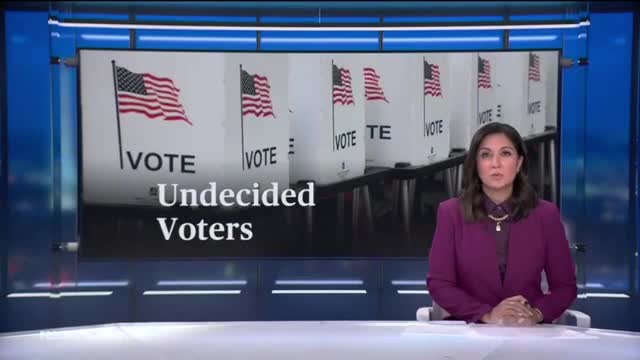Undecided voters shift toward Kamala Harris after debate
This article was created by AI summarizing key points discussed. AI makes mistakes, so for full details and context, please refer to the video of the full meeting. Please report any errors so we can fix them. Report an error »

As the race for the White House intensifies, the focus shifts to a small yet pivotal group of undecided voters, whose decisions could sway the election outcome. Recent polling data indicates that this demographic remains limited, with only about 3% of respondents identifying as undecided, a figure that rose to approximately 9% following the entry of Kamala Harris into the race.
In a recent analysis by NPR's Domenico Montanaro, insights were gathered from a selection of undecided voters who participated in the PBS News NPR Marist Poll. Out of 46 undecided individuals surveyed over several months, Montanaro spoke directly to ten—five men and five women—after a significant debate event. The results revealed a notable shift in voter sentiment: four individuals expressed a leaning toward Harris, while two leaned toward Donald Trump. However, four remained undecided, and three indicated they might abstain from voting altogether.
The debate appears to have played a crucial role in influencing these voters, particularly for Kamala Harris, who many in this group were previously unfamiliar with. The analysis highlighted a significant gender divide, with all four voters now leaning toward Harris being women. This trend underscores the importance of targeted outreach and engagement strategies, especially in a hyper-partisan political climate where voter preferences can shift rapidly.
One voter, Janae Prophet from Arkansas, exemplified the sentiments of this group, reflecting the broader trends observed in the poll. As the election approaches, understanding the motivations and concerns of undecided voters will be essential for both campaigns as they seek to secure crucial support in a tightly contested race.
In a recent analysis by NPR's Domenico Montanaro, insights were gathered from a selection of undecided voters who participated in the PBS News NPR Marist Poll. Out of 46 undecided individuals surveyed over several months, Montanaro spoke directly to ten—five men and five women—after a significant debate event. The results revealed a notable shift in voter sentiment: four individuals expressed a leaning toward Harris, while two leaned toward Donald Trump. However, four remained undecided, and three indicated they might abstain from voting altogether.
The debate appears to have played a crucial role in influencing these voters, particularly for Kamala Harris, who many in this group were previously unfamiliar with. The analysis highlighted a significant gender divide, with all four voters now leaning toward Harris being women. This trend underscores the importance of targeted outreach and engagement strategies, especially in a hyper-partisan political climate where voter preferences can shift rapidly.
One voter, Janae Prophet from Arkansas, exemplified the sentiments of this group, reflecting the broader trends observed in the poll. As the election approaches, understanding the motivations and concerns of undecided voters will be essential for both campaigns as they seek to secure crucial support in a tightly contested race.
View full meeting
This article is based on a recent meeting—watch the full video and explore the complete transcript for deeper insights into the discussion.
View full meeting